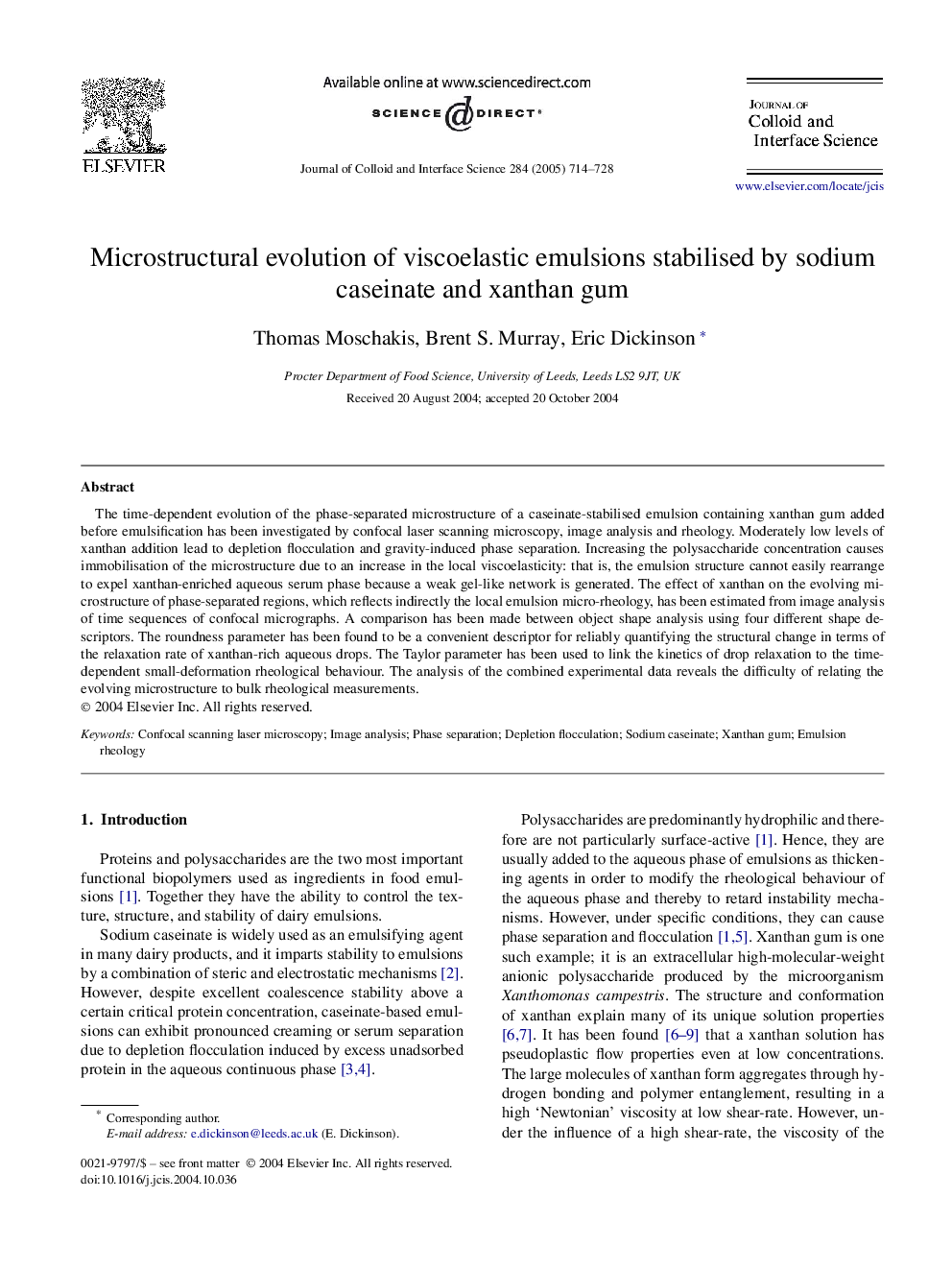| Article ID | Journal | Published Year | Pages | File Type |
|---|---|---|---|---|
| 10378265 | Journal of Colloid and Interface Science | 2005 | 15 Pages |
Abstract
The time-dependent evolution of the phase-separated microstructure of a caseinate-stabilised emulsion containing xanthan gum added before emulsification has been investigated by confocal laser scanning microscopy, image analysis and rheology. Moderately low levels of xanthan addition lead to depletion flocculation and gravity-induced phase separation. Increasing the polysaccharide concentration causes immobilisation of the microstructure due to an increase in the local viscoelasticity: that is, the emulsion structure cannot easily rearrange to expel xanthan-enriched aqueous serum phase because a weak gel-like network is generated. The effect of xanthan on the evolving microstructure of phase-separated regions, which reflects indirectly the local emulsion micro-rheology, has been estimated from image analysis of time sequences of confocal micrographs. A comparison has been made between object shape analysis using four different shape descriptors. The roundness parameter has been found to be a convenient descriptor for reliably quantifying the structural change in terms of the relaxation rate of xanthan-rich aqueous drops. The Taylor parameter has been used to link the kinetics of drop relaxation to the time-dependent small-deformation rheological behaviour. The analysis of the combined experimental data reveals the difficulty of relating the evolving microstructure to bulk rheological measurements.
Keywords
Related Topics
Physical Sciences and Engineering
Chemical Engineering
Colloid and Surface Chemistry
Authors
Thomas Moschakis, Brent S. Murray, Eric Dickinson,
